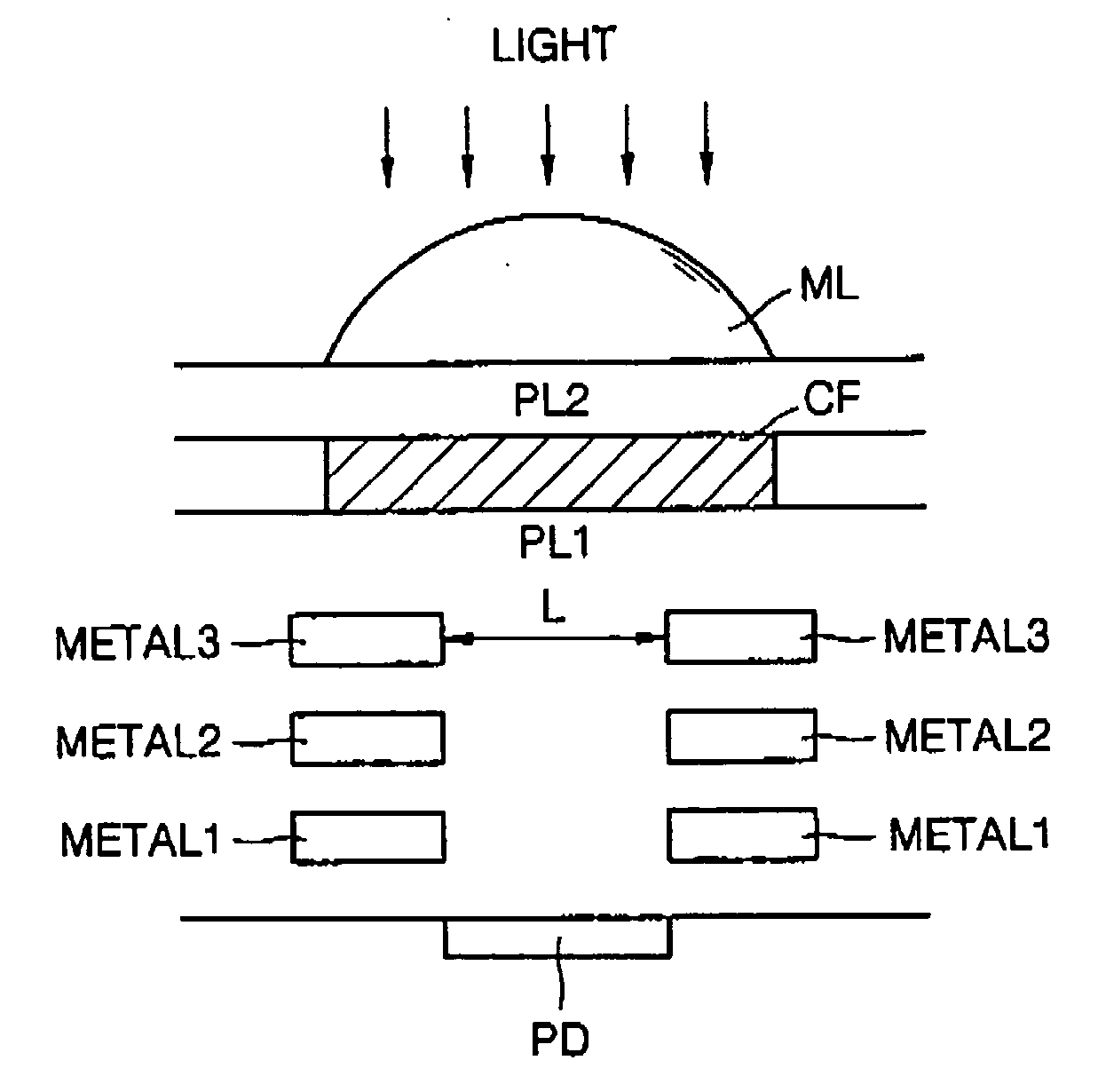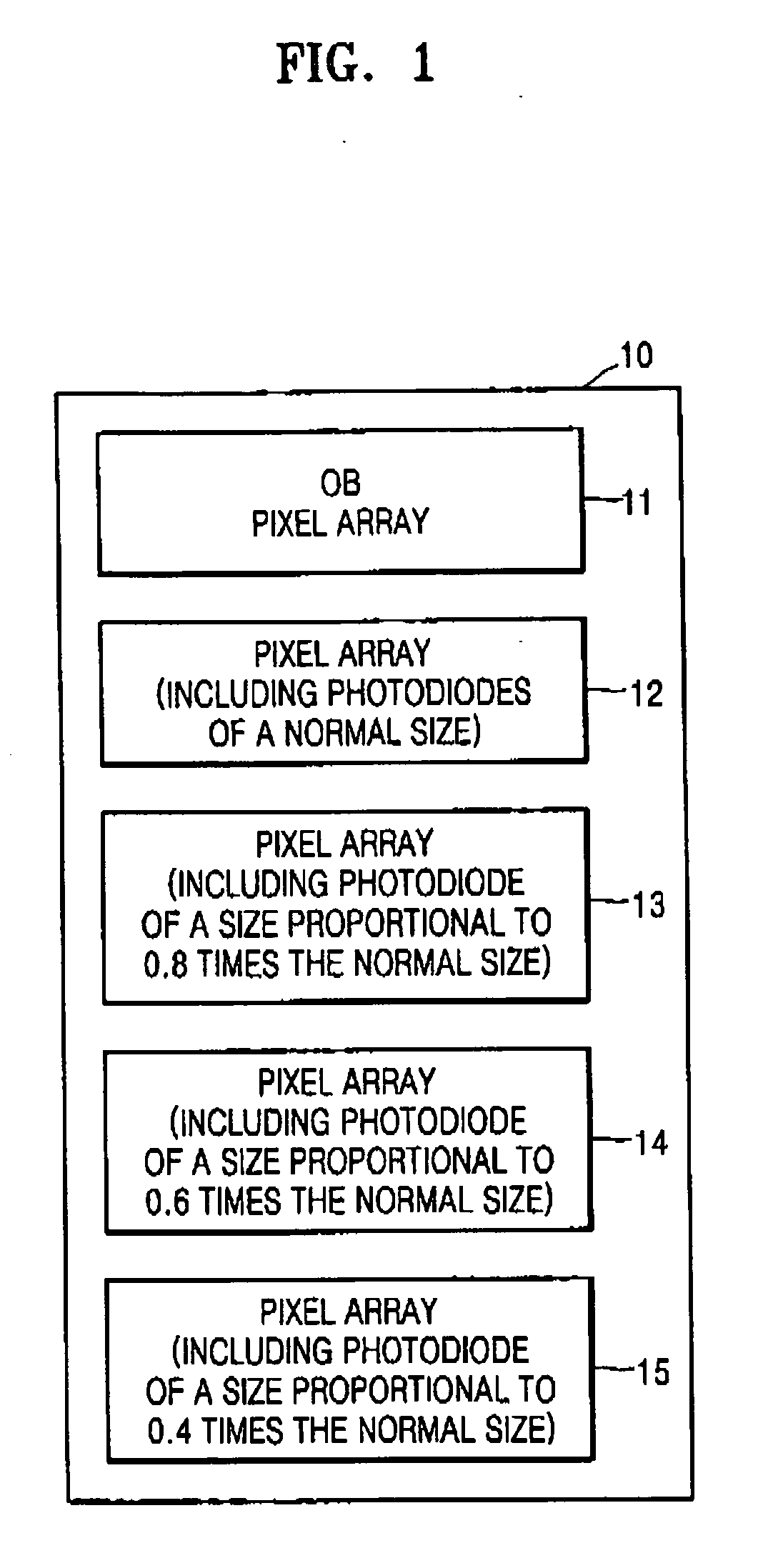Image sensor test patterns for evaluating light-accumulating characteristics of image sensors and methods of testing same
a technology of image sensor and light-accumulating characteristics, which is applied in the direction of electrical equipment, semiconductor devices, radio frequency controlled devices, etc., can solve the problems of requiring a number of mask steps, high power consumption, and a relatively complex driving scheme, and achieve the effect of reducing the time required for testing
- Summary
- Abstract
- Description
- Claims
- Application Information
AI Technical Summary
Benefits of technology
Problems solved by technology
Method used
Image
Examples
first embodiment
[0023] A test method of the optical characteristics of the CMOS image sensor using the test pattern will be described in detail. Generally, in the CMOS image sensor, the number of electrons which are photoelectrically converted from photons of incident light is in proportion to the size of the photodiode (PD). Specifically, the number of electrons generated at a specific luminous intensity varies depending on the size of the photodiode (PD).
[0024] In the test method using the test pattern of the optical characteristics according to the first embodiment, a test pattern region 10 for monitoring the optical characteristics is set in the CMOS image sensor chip, a pixel array 12 including photodiodes of a normal size, and a plurality of pixel array regions 13 to 15 including photodiodes of a size proportional to the normal size are located in the test pattern region 10, and then the optical characteristics of the CMOS image sensor at a single luminous intensity are tested by using the p...
second embodiment
[0028] A test method of the optical characteristics of the CMOS image sensor using the test pattern will be described in detail. In the CMOS image sensor, the number of electrons which are photoelectrically converted from photons of incident light is in proportion to the size of the photodiode (PD) and the size of the open hole (L) of the photodiode (PD). Specifically, the number of electrons generated at a specific luminous intensity varies depending on the size of the open hole (L) of the photodiode (PD).
[0029] In the test method using the test pattern of the optical characteristics according to the second embodiment, a test pattern region 40 for monitoring the optical characteristics is set in the CMOS image sensor chip, a pixel array 42 including photodiodes having an open hole of a normal size and a plurality of pixel array regions 43 to 45 including photodiodes having open holes of a size proportional to the normal size are located in the test pattern region 40, and then the ...
third embodiment
[0033] A test method of the optical characteristics of the CMOS image sensor by using the test pattern will be described in detail. In the CMOS image sensor, the number of electrons which are photoelectrically converted from photons of incident light may be controlled according to the thickness and density of the color filter (CF). Specifically, the number of electrons generated at a specific luminous intensity varies depending on the thickness and density of the color filter (CF).
[0034] In the test method using the test pattern of the optical characteristics according to the third embodiment, a test pattern region 60 for monitoring the optical characteristics is set in the CMOS image sensor chip, a pixel array 62 including photodiodes having a color filter (CF) of a normal thickness and density and a plurality of pixel array regions 63 to 65 including photodiodes having color filters (CF) of a thickness or density proportional to the normal thickness or the normal density are loca...
PUM
 Login to View More
Login to View More Abstract
Description
Claims
Application Information
 Login to View More
Login to View More - R&D
- Intellectual Property
- Life Sciences
- Materials
- Tech Scout
- Unparalleled Data Quality
- Higher Quality Content
- 60% Fewer Hallucinations
Browse by: Latest US Patents, China's latest patents, Technical Efficacy Thesaurus, Application Domain, Technology Topic, Popular Technical Reports.
© 2025 PatSnap. All rights reserved.Legal|Privacy policy|Modern Slavery Act Transparency Statement|Sitemap|About US| Contact US: help@patsnap.com



